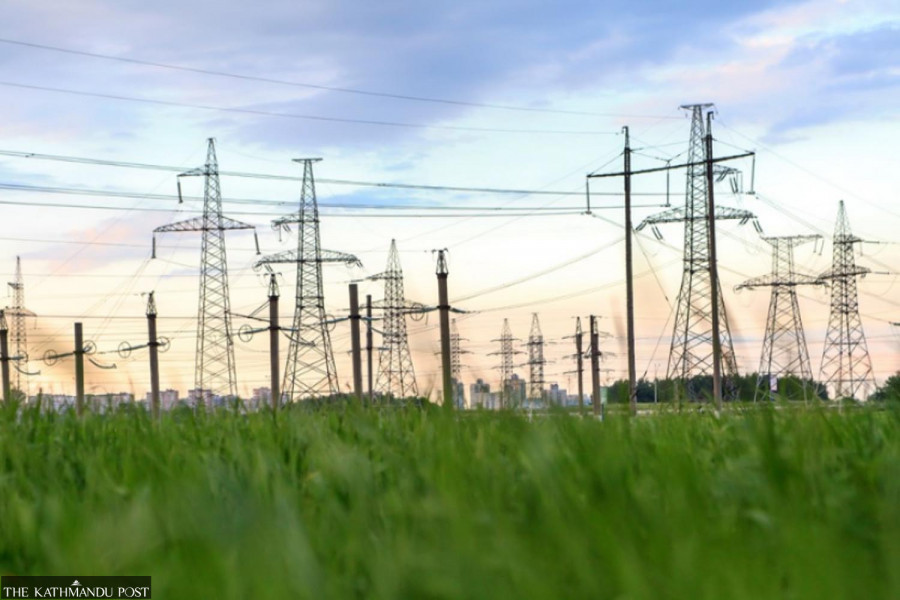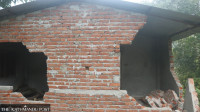National
Budget for transmission lines cut despite high capacity power line being a top priority
The government’s budget says both domestic and cross-border power lines are priorities.
Prithvi Man Shrestha
After being able to produce surplus energy during the wet season, improving the transmission line infrastructure has been a major priority of the Nepal Electricity Authority (NEA) to increase domestic consumption and boost exports.
But the government has reduced the allocation of the budget for transmission line projects for the next fiscal year 2023-2024 starting on July 17.
According to the budget for the next fiscal year presented by Finance Minister Prakash Sharan Mahat in parliament on Monday, the government has allocated Rs38.32 billion for the construction of domestic transmission infrastructure and cross border transmission infrastructure.
For the ongoing fiscal year, the government had allocated Rs43.95 billion for the construction of transmission lines and substations.
However, the overall budgetary allocation for the energy sector has increased to Rs87.45 billion for the next fiscal year from the Rs75.10 billion allocated for this year.
“Improving the transmission and distribution infrastructure is our biggest priority. We usually face budget crunch in these sectors,” said Dirghayu Kumar Shrestha, chief of transmission directorate at NEA. “We had sought Rs19 billion from the government sources. We receive additional funding from the donors too.”
Citing a resource crunch, the government had reduced the amount to be provided to the NEA from its sources for the current fiscal year, said Shrestha. “I am not immediately sure about the allocation from the donors.”
According to the budgetary provision, construction of the 400kV New Butwal-Gorakhpur, Inaruwa-Purnia and Dodhra-Bareli Cross Border Transmission Line will be initiated.
Nepal and India had agreed to develop the 400kV Inaruwa (Duhabi-Purnia, Bihar) and 400kV New Lamki (Dodhara-Bareli, Uttar Pradesh) cross-border lines by 2027-2028 and 2028-2029, respectively, during during the 10th joint secretary-level Joint Working Group and the Secretary-level Joint Steering Committee held in Jaipur, India in February.
Lack of adequate cross-border transmission capacity has been worrying Nepal as the country’s power production capacity has been on the rise. Nepal’s entire installed capacity of operating power projects has reached 2,650MW as of early April and generation capacity is expected to reach 2,853MW by mid-July, according to the NEA.
But the peak domestic demand for power is expected to grow to 2,280MW in mid-July 2024. So, Nepal will have to export power to avoid spillages and for this, a reliable cross border power line is essential, the NEA officials said.
The work on the 400kV Karnali Corridor Transmission line will be intensified. Financial arrangements to construct power lines along the Bheri corridor, West Seti corridor and Arun corridor will be made, according to the budget.
Other high capacity transmission line projects including those to be constructed with the assistance of Millennium Challenge Corporation will also be initiated, as per the budget.
Construction work of Butwal-Lamahi-Dodhara, Lapsiphedi-Ratmate-Hetauda and Ratmate-Damauli-Butwal will be taken forward, it said. None of the domestic 400kV power lines has been completed yet. The only 400kV cross border transmission line currently operating is the Dhalkebar-Muzaffarpur line.
NEA officials said the domestic transmission infrastructure also needs to be improved markedly to ensure the reliability of power supply and to promote the use of electricity from vehicles to kitchens.
The NEA has struggled to supply electricity in Birgunj areas in the winter during the current and last year because of a lack of high capacity transmission lines which led to power cuts in the Bara-Parsa industrial corridor.
In this context, the budget for the transmission line has been reduced for the next fiscal year.
Ashish Garga, vice-president of the Independent Power Producers’ Association of Nepal said that a slight decline in the budget for the transmission line would not affect the NEA significantly. “The budget has, however, failed to introduce any new initiatives in the power sector,” he added.




 12.12°C Kathmandu
12.12°C Kathmandu















